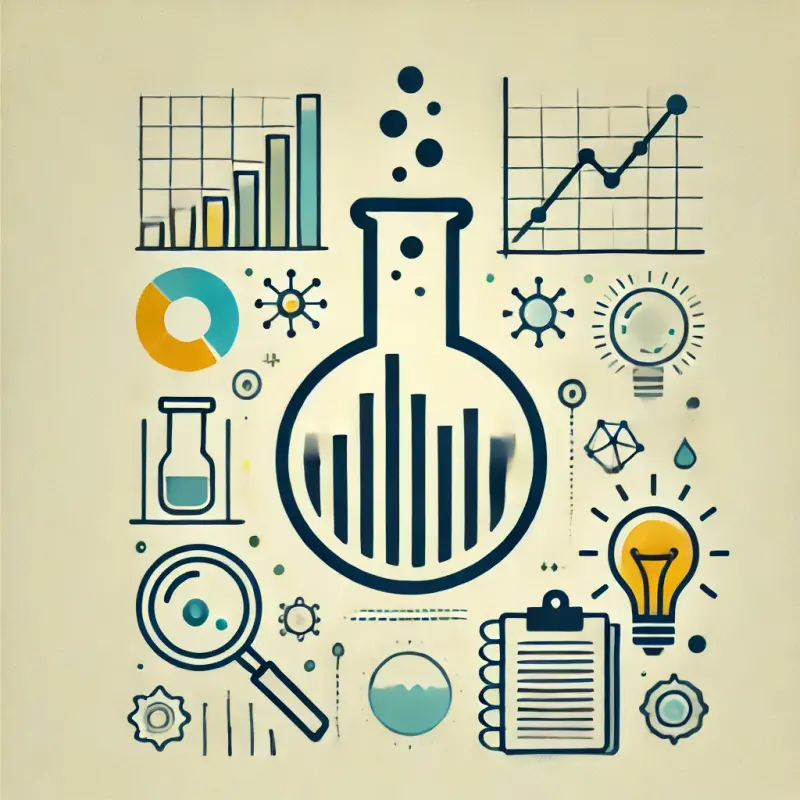
How to Develop Research Skills Through Scientific Experiments: Practical Examples and Tips
Scientific research is not just a field reserved for academia; it’s a valuable skill that can be applied in virtually any discipline or area of study. Whether you’re an aspiring scientist, an engineer, a student, or simply someone eager to improve their analytical skills, understanding the principles of scientific experimentation can significantly enhance your ability to think critically and approach problems methodically. One of the most effective ways to develop these research skills is by directly engaging in scientific experiments. This article will explore how you can grow your research abilities through the process of experimentation, offering practical examples and actionable tips along the way.
The Value of Scientific Experiments in Research Development
At the core of any successful research project is a well-structured experiment. Scientific experiments provide a framework for testing hypotheses, analyzing data, and drawing conclusions. They help researchers identify patterns, discover new phenomena, and validate theories. By engaging in this process, you can develop several key skills that are crucial for any type of research, including:
- Critical Thinking: Scientific experiments require you to question assumptions, consider alternative explanations, and evaluate evidence objectively.
- Problem Solving: Designing and conducting experiments often involves troubleshooting unexpected challenges, making this an excellent way to hone your problem-solving abilities.
- Data Analysis: Collecting and interpreting data is a fundamental aspect of scientific research. Through experimentation, you will become more proficient at analyzing numerical or qualitative data and drawing valid conclusions from it.
- Attention to Detail: Conducting experiments requires precision in measurement and documentation. This sharpens your ability to notice small but important details in any research setting.
Designing Your First Scientific Experiment
The first step in developing your research skills through scientific experiments is learning how to design a well-thought-out experiment. While there are many different types of experiments, the basic structure remains the same, whether you’re testing a physical phenomenon, a behavioral hypothesis, or analyzing chemical reactions. Here's a simple approach to experiment design:
-
Identify the Research Question
Every experiment begins with a question. This could range from a curiosity about how a particular substance reacts under certain conditions to a desire to understand a broader scientific principle. To improve your research skills, make sure your question is clear, specific, and testable.Example: What effect does the amount of light exposure have on the growth rate of a particular plant species?
-
Formulate a Hypothesis
A hypothesis is an educated guess about the outcome of your experiment based on prior knowledge, observations, or theory. It should be clear, concise, and measurable.Example: If a plant receives more light, it will grow faster than a plant with less light exposure.
-
Determine the Variables
Every experiment involves at least two types of variables: the independent variable and the dependent variable. The independent variable is what you change in the experiment, while the dependent variable is what you measure.Example: In the plant growth experiment, the independent variable would be the amount of light exposure, and the dependent variable would be the rate of plant growth (measured in height or leaf count).
-
Control External Factors
To ensure that your results are reliable, control for other variables that could influence the outcome of the experiment. This might include controlling the temperature, the type of soil, or the amount of water the plants receive. -
Collect Data
As the experiment progresses, record your observations and measurements systematically. It’s important to gather enough data to support your conclusions, so aim for consistent and frequent measurements. -
Analyze the Results
Once you have collected your data, you can analyze it to determine whether it supports or refutes your hypothesis. This might involve simple calculations or more complex statistical analysis, depending on the nature of your experiment. -
Draw Conclusions
Finally, evaluate the results. Did your experiment answer the original question? If so, what can you conclude from the data? If not, you may need to adjust your hypothesis or experimental design and try again.
Practical Examples of Research Experiments
While the process of scientific experimentation can be complex, starting with smaller, simpler experiments can help you build your skills progressively. Here are a few examples of practical experiments that can help you develop your research skills:
1. The Effect of Temperature on Solubility
- Objective: Investigate how the temperature of a solvent (e.g., water) affects the rate at which a substance (e.g., sugar or salt) dissolves.
- Skills Developed: Hypothesis formulation, data collection, and quantitative analysis.
- Why It Works: This experiment offers a straightforward setup that involves measurable outcomes. It allows you to practice analyzing numerical data and understanding cause-and-effect relationships.
2. Testing the Impact of Different Study Techniques on Memory Retention
- Objective: Explore which study technique—like spaced repetition or simple memorization—has the greatest impact on memory retention.
- Skills Developed: Experimental design, controlling variables, and qualitative data analysis.
- Why It Works: This is a great way to develop research skills that can be applied to psychology or education research. It emphasizes the importance of controlling variables and the necessity of using control groups.
3. Exploring the Relationship Between Light and Plant Growth
- Objective: Analyze how different light conditions affect the growth of a specific plant.
- Skills Developed: Scientific observation, experiment documentation, and graphing data.
- Why It Works: This is a classic example of a biology experiment that allows for the practice of controlled experimentation and long-term observation.
Each of these experiments not only provides valuable data but also serves as an opportunity to refine your research skills. They encourage you to think critically, adapt your methods when necessary, and interpret results in a meaningful way.